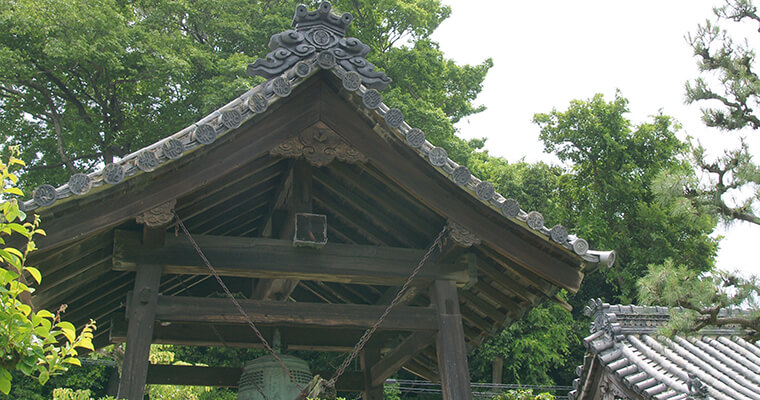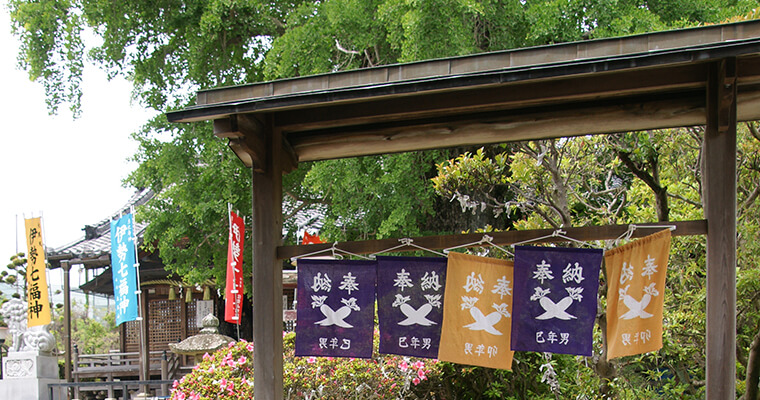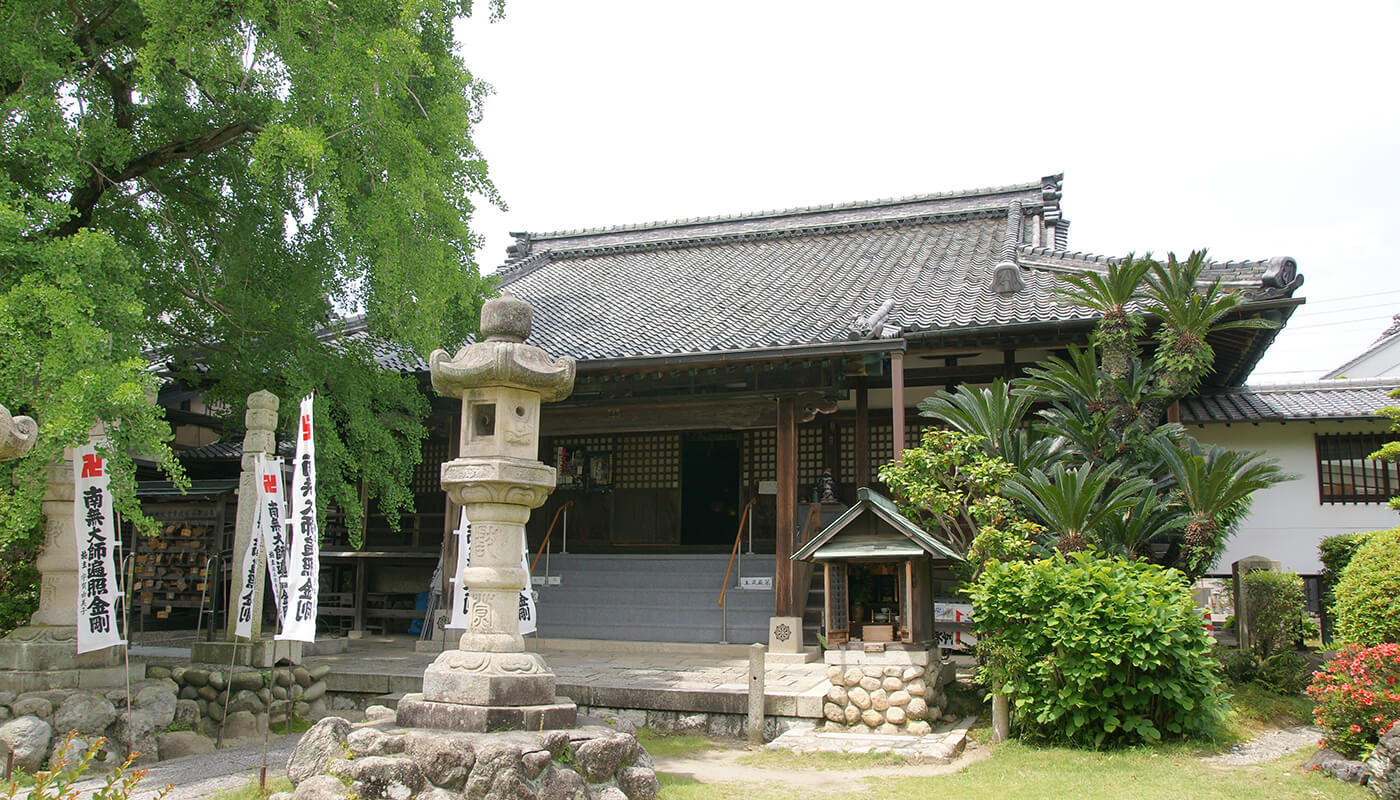Bangai Daifukuden-ji temple
History of the temple
According to the legend Daifukuden-ji was founded by a famous politician and promoter of Buddhism Prince Shōtoku (574-622). It was called Daijingū-ji and originally stood in Ise Yamada. The temple was directly connected to the Ise Shrine and was visited by Emperor Tenmu (631-686), Empress Jitō (645-703) and Emperor Shōmu (701-756) during their travels to Ise. In Tenchō period (824-834) it became a practice ground for Shingon school of Buddhism after Kūkai (Kōbō Daishi, 774-835), the founder of Shingon sect, taught the principles of Esoteric Buddhism during his visit. In the times of Emperor Junna (786-840) the temple was chosen as an official place that would pray for the Emperor. Emperor Uda (867-931) also visited Daijingū-ji during his travels and used to stay at the abbot’s chambers. Since his visit the official name of the temple was changed to Hōkō-in (Cloistered Emperor’s Temple). In 1052 Emperor Goreizei (1025-1068) organized a mass chanting of sutras by 1000 monks in the temple. The prayer was conducted together with a ritual offering of a wand with hemp and paper streamers to Ise Shrine. Until the mid-19th Century Daifukuden-ji was officially praying for each generation of the Emperor and for the Imperial family members. Because of that the temple was allowed to use the Imperial family crest – a chrysanthemum.
During the Kōan period (1278-1289) the temple burned down. It was rebuilt in the Kambe (currently Daifuku) area of Kuwana thanks to the cooperation of the official of the Ise Shrine and a protector of Yamato province Nukatabe no Sanezumi (he was a descendant of Kadokane – developer and landowner of Kuwana Kambe area), and Ninshō, a monk and founder of Gokuraku-ji temple in Sagami province. Emperor Gouda (1267-1324) donated new land to the temple, made it his official praying place and gave it a new name – Fukuden-ji. It earned respect of Ashikaga Takauji (1305-1358), the founder and first shogun of the Ashikaga shogunate, and was given a new character meaning “big, great” to add to its name. Since that moment the temple’s official name became Daifukuden-ji.
During the Meiō period (1492-1501) Daifukuden-ji countless times suffered from fires caused by war and at one point it fell into ruin. The temple was rebuilt as a complete seven-structured temple compound in 1501, after its abbot Eiki gathered donations around the country. In 1503 its main statue was also remade and enshrined. Thanks to the official document issued by the Imperial house in 1567 and prohibiting anyone from entering the temple’s grounds, Daifukuden-ji was speared during the battles between 1570 and 1592. However due to impoverishment of the surrounding lands, the temple had fallen into decay again. In the following years the temple’s buildings were flooded many times, that is why in 1662 the abbot named Shinnin decided to move the temple to its current location.
There are two halls in the temple. The one seen up front when entering the temple through the main gate is the Main Hall. Inside Buddha Amida (Buddha of Infinite Light), also called Hiki Amida (Pulled Amida), is enshrined as the main statue. There are also three statues of his attendants: Jūichimen Kannon (Eleven-Faced Kannon), Shō Kannon (Sacred Kannon), Bodhisattva Monju (Bodhisattva of Supreme Wisdom), and a statue of Kūkai. On the south side of the Main Hall stands the Hall of Prayers. There are two statues inside, a personal statue of Kuwana province daimyo Matsudaira Sadanobu (1759-1829) depicting Shōten (Kankiten, Ganesha, a god of conjugal harmony and long life), and a statue of bad luck expelling Fudō Myō-ō (Immovable Wisdom King). Daifukuden-ji is visited by many people during the days of the temple’s festival known as Shōten of Kuwana. The festival is held on the 1st and 16th day of every month.
Daifukuden-ji has many treasures in its possession. Among them a Hassō Jōdō Ezu (painting of the eight major events in the life of the Buddha Shaka) form Kamakura period (1192-1333), a painting titled Tōzan Saiken Kanjin Engi (Story of preaching and reconstruction of Daifukuden-ji) created by Sanjōnishi Sanetaka in Muromachi period (1333-1573), and Ninshō Shōnin Jigazō (Self portrait of the Holy priest Ninshō), which are all designated as National Important Cultural Properties.
The statue of Shō Kannon is also called Awase Kannon (Joint Kannon). According to the legend Goddess Amaterasu (Goddess of the Sun) and Kasuga Myōjin (the deity of Kasuga Shrine in Nara) decided to send a divination and ask two Korean Buddhist sculptors – brothers Kei Mone and Kei Shukun, to each make a half of a statue of Shō Kannon and bring it to Japan. They did as asked and both of them met at the riverbank of Miyagawa river, each carrying a half of a statue. When they tried to join the halves, they discovered that they match perfectly. It is said that this statue of Joint Shō Kannon was created according to the joint will of two Shinto gods – Goddess Amaterasu and Kasuga Myōjin.
Daifukuden-ji is a temple number 1 of Mie Shikoku 88 Temples Pilgrimage and one of the Ise Seven Temples of Luck enshrining Daikoku (God of Wealth, Farmers, Food, and Good Fortune).

Outline
-
Honorific name
Shinpōzan
-
Temple's name
Daifukuden-ji
-
Sect
Shingon Kōyasan branch
-
Religious service
Jūichimen Kannon
(Eleven-Faced Kannon)





